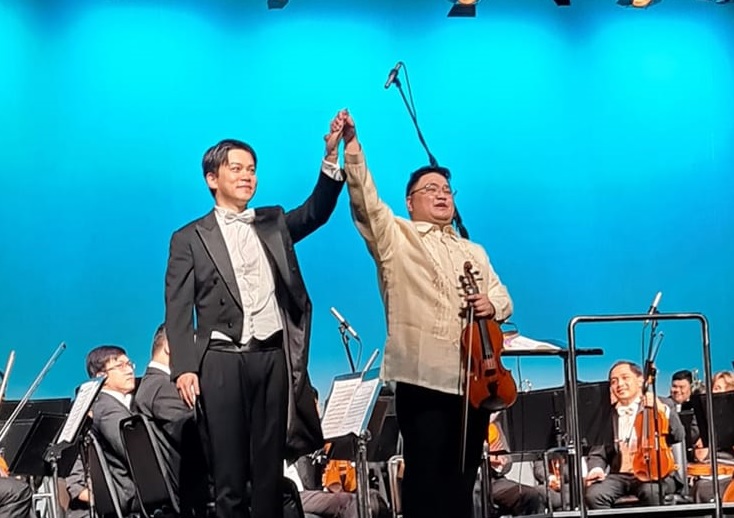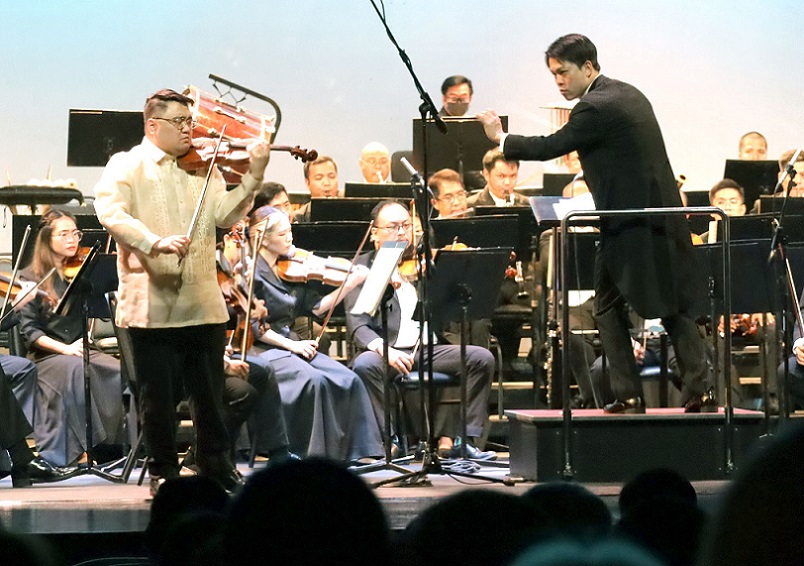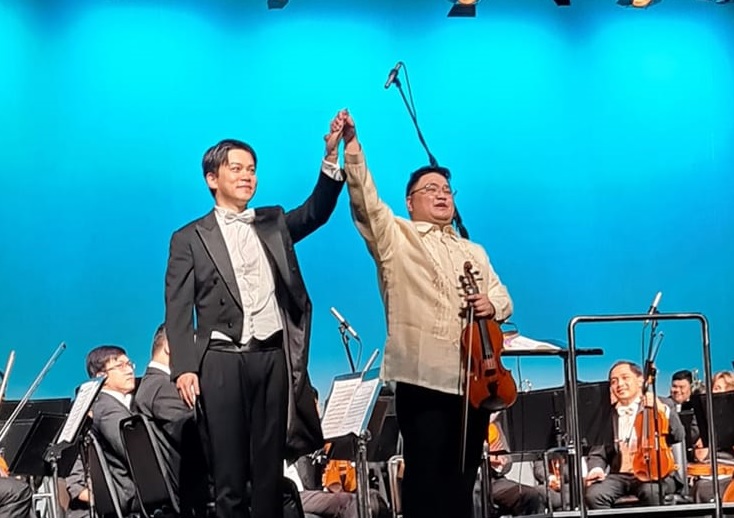
The Philippine Philharmonic Orchestra under guest conductor Haoran Li showed its inner, if, subtle temperament playing a repertoire devoid of instantly recognizable bravura qualities Friday night (Feb. 24) at the Manila Metropolitan Theater.
It opened with a tone poem, By the Hillside, by Antonino Buenaventura.
The opening piece is a tough act to realize as the music has to capture a vivid scene “by a hillside one quiet afternoon before sunset.” The general mood of the tone poem is a reverie with “memories of childhood, country life, public school days and idylls of love and courtship.
Conductor Li, young as he is, was able to capture the inner structure of the tone poem and made a soft but stunning finale worthy of the composer’s wishes.
He certainly has a respectable command of the orchestra which gave the piece a tender, if, ravishing ending.
The tone poem was first performed by the Manila Symphony Orchestra under Herbert Zipper in 1941 at the Burnham Auditorium in Baguio City during one of the short reigns of the Summer Music Festival of Baguio City.
In the middle of the program is Sibelius’s Violin Concerto in D Minor, Op. 47 with Diomedes Saraza, Jr. as the soloist.
To be sure, the violin concerto Op. 47 is known as one of the tough but favorite warhorses equal in status to other well-known romantic virtuoso concertos such as those composed by Mendelssohn (1844), Tchaikovsky (1878), and Brahms (1879).

One believed Saraza has played the concerto a few times with the PPO under different conductors.
Twice he has played it under the French-American conductor Oliver Ochanine the most notable of which was the PPO’s 2016 debut at the Carnegie Hall with Cecile Licad closing the New York program with Rachmaninoff Piano Concerto No. 2.
The violinist said performing it again in a different setting was like meeting an old friend.
Coming in at the allegro moderato movement, the violinist showed a clear, vivid attention to line and showing artistry beyond the call of technique, lighter in tone while avoiding unnecessary overstatements.
He was even more in command in the delicate first movement cadenza without the orchestra.
An equally challenging section is the adagio part in the middle movement which musicologists admit is one of the most moving pages Sibelius ever achieved.
Li is a quietly engaging conductor as he led the orchestra into the challenging labyrinths of the concerto.
For the most part, he achieved balance and power without the unnecessary gestures and making sure the soloist was not just on the right track but blending perfectly with the orchestra. Saraza has very little problem reconvening the theme of the concerto and built around it a sense of drama ending the piece with amazing brilliance.
After several curtain calls, Saraza played a mind-blowing encore piece, Paganini’s Caprice No. 5 which elicited more ecstatic applause.
Other Filipino violinists come to mind as one recalled previous live performances of the Sibelius concerto.
Carmencita Lozada, the only Filipino prizewinner of the Paganini Competition in Italy has played it as a last-minute replacement for an indisposed soloist in Frankfurt many years back.
(Apart from Saraza, his student — the then 15-year-old Jeanne Marquez now a scholar of the Juilliard School – was a soloist in the Sibelius concerto with the Manila Symphony under the baton of the phenomenal Filipino-Finnish conductor Tarmo Peltokoski who was only 19 in 2019. As one recalled the concert, the Sibelius violin soloist sizzled. But the conductor was phenomenal. Only 19 at the time, he was so impressive he earned several euphoric curtain calls and a standing ovation after Beethoven’s Fifth.)
Pictures at an exhibition, Mussorgsky’s vivid musical gallery, certainly showcased the immense talent of Haoran Li as a superb conductor.

The ten movements of the piece came out alive, vivid and distinguished with all the portrait details coming out in Li’s excellent reading.
From Promenade I to Gnomus (The Gnome), Promenade II, Il Vecchio Castello (The Old Castle), Promenade III, Tuileries (Dispute d’enfants après jeux – Children’s quarrel after games), Bydło (Cattle), Promenade IV, Ballet des poussins dans leurs coques (Ballet of the Unhatched Chicks), “Samuel” Goldenberg und “Schmuyle,” Limoges, le marché (La grande nouvelle – The Market Place at Limoges), Catacombæ (Sepulcrum romanum – Catacombs), Cum mortuis in lingua mortua (When a dead language…) to Baba-Yagá (La cabane sur des pattes de poules – The Hut on Fowl’s Legs), The Knight’s Gate (in the Old Capital of Kiev) or The Great Gate of Kiev, Li made something musically astounding of each portrait.
The last section was a fitting finale with its brass-heavy opening and majestic orchestral theme juxtaposed with softer woodwinds and with the lyrical woodwinds returning before a shimmering march. It ended the Russian composer’s monumental piece with a bang.
It was an auspicious Manila debut for Li who just conducted The Royal Danish Opera Orchestra at Det Kongelige Teater in Denmark. He also kicked off the New Year program of the Forbidden City Concert Hall in Beijing.
The next concert will highlight the PPO debut of Beverly Shangkuan-Cheng on March 17, 2023 (8 p.m.) also the Manila Metropolitan Theater.
For tickets, call the CCP Box Office at 8832-3704.

